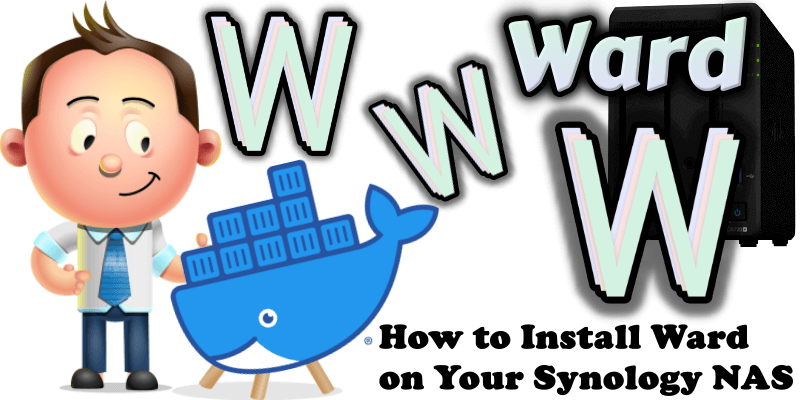
Ward is a simple and minimalistic server monitoring tool like Dashdot. Ward supports features such as adaptive design system and dark mode. It shows only principal information and can be used if you want to see a nice looking dashboard instead of looking at a bunch of numbers and graphs. In this step by step guide I will show you how to install Ward on your Synology NAS using Docker and Portainer.
This guide works perfectly with the latest Ward 2.5.4 release.
STEP 1
Please Support My work by Making a Donation.
STEP 2
Install Portainer using my step by step guide. If you already have Portainer installed on your Synology NAS, skip this STEP. Attention: Make sure you have installed the latest Portainer version.
STEP 3
Log into Portainer using your username and password. On the left sidebar in Portainer, click on Home then Live connect. Follow the instructions in the image below.

On the left sidebar in Portainer, click on Stacks then + Add stack. Follow the instructions in the image below.

STEP 4
In the Name field type in ward. Follow the instructions in the image below.
version: '3.9'
services:
ward:
container_name: Ward
image: antonyleons/ward
healthcheck:
test: curl -f http://localhost:4000/ || exit 1
mem_limit: 2g
cpu_shares: 768
security_opt:
- no-new-privileges:true
ports:
- 7895:4000
environment:
ARD_PORT: 7895
WARD_THEME: dark
WARD_NAME: mariushosting
privileged: true
restart: on-failure:5
Note: Before you paste the code above in the Web editor area below, change the value for WARD_THEME. Type in dark for Dark mode or light for Light mode.
Note: Before you paste the code above in the Web editor area below, change the value for WARD_NAME. Choose a name for the Navigation bar. mariushosting is an example of a Navigation bar name.
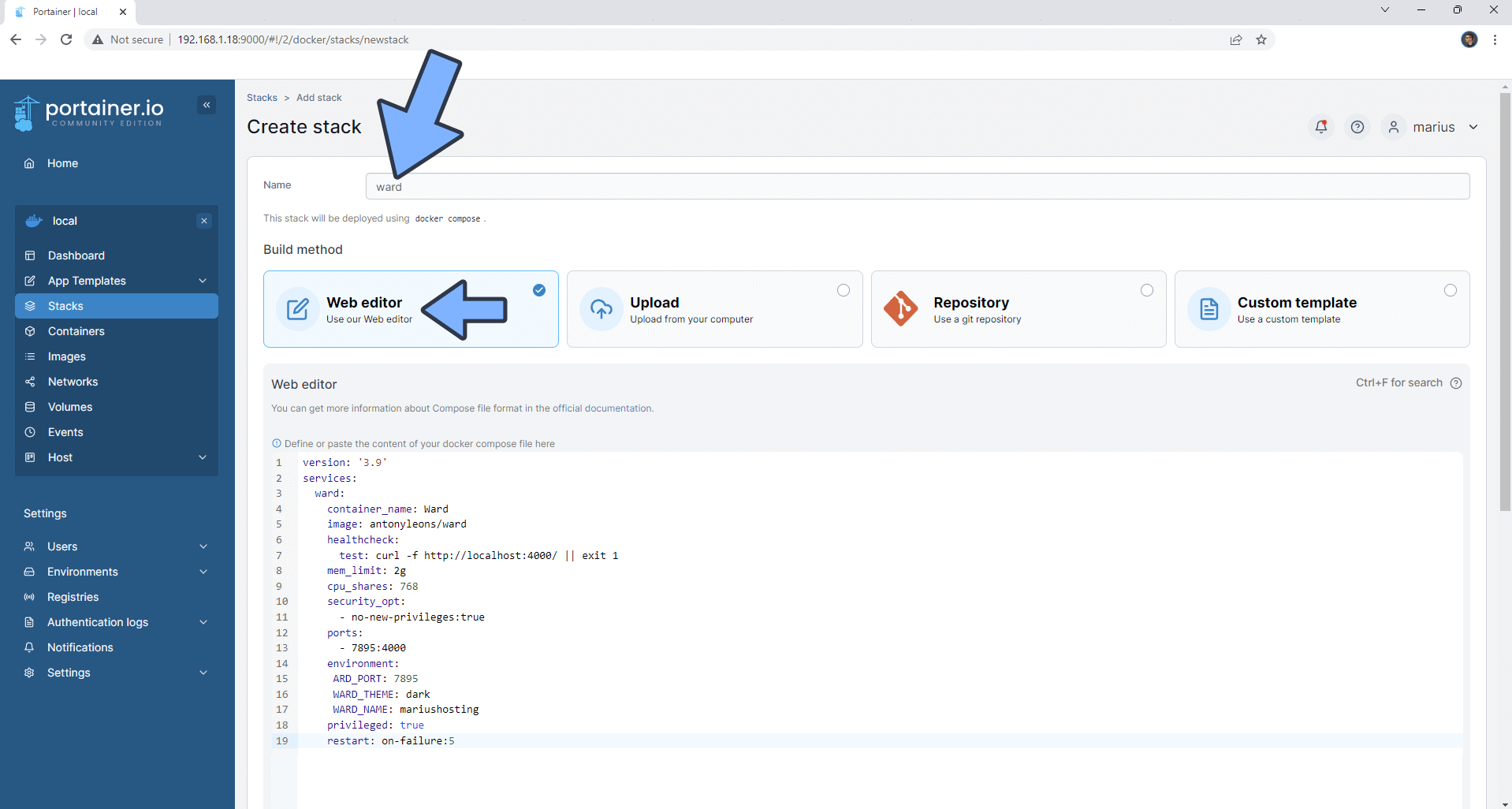
STEP 5
Scroll down on the page until you see a button called Deploy the stack. Click on it. Follow the instructions in the image below. The installation process can take up to a few minutes. It will depend on your Internet speed connection.
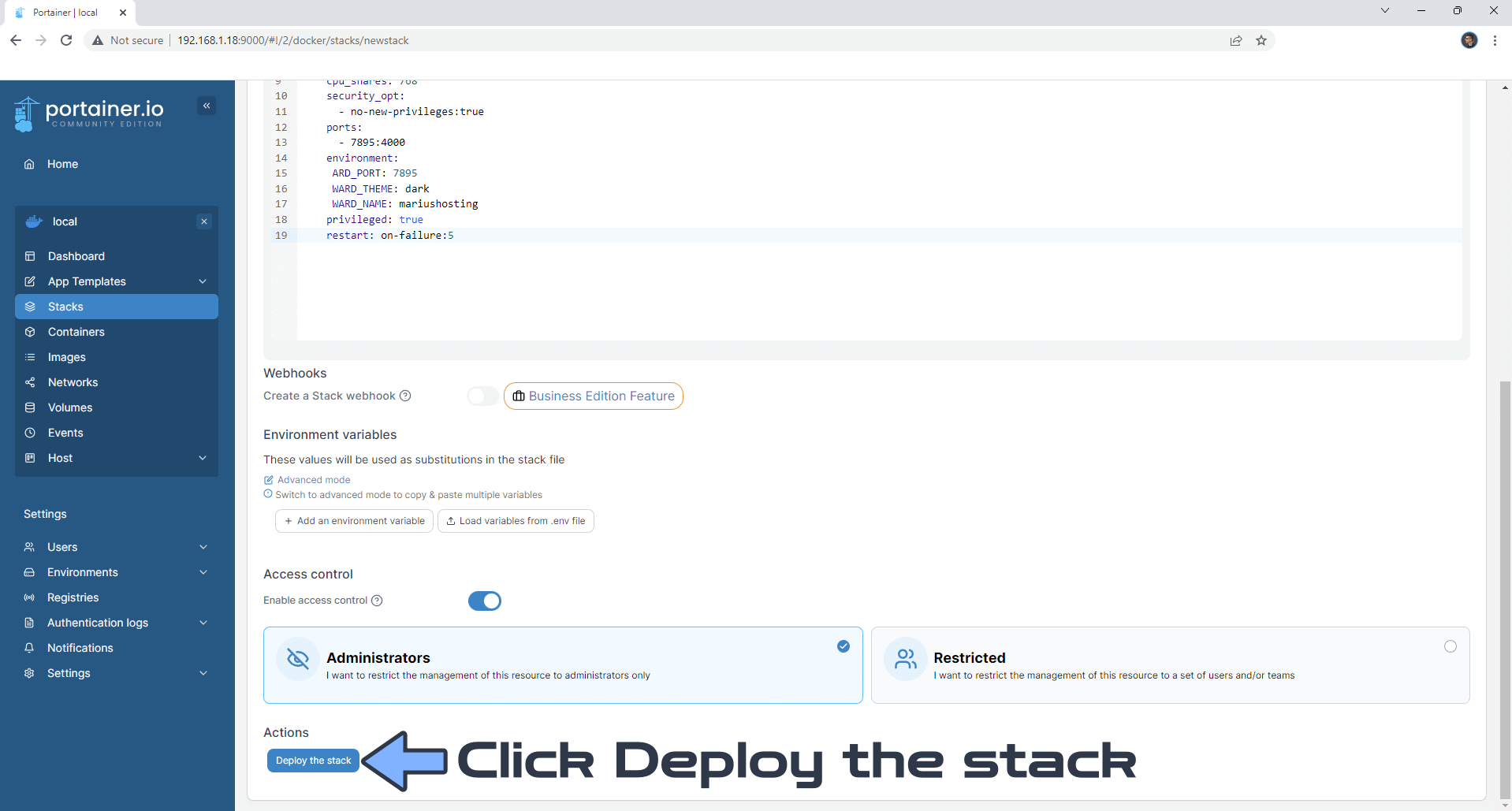
STEP 6
If everything goes right, you will see this message at the top right of your screen: “Success Stack successfully deployed“.

STEP 7
🟢Please Support My work by Making a Donation. Almost 99,9% of the people that install something using my guides forget to support my work, or just ignore STEP 1. I’ve been very honest about this aspect of my work since the beginning: I don’t run any ADS, I don’t require subscriptions, paid or otherwise, I don’t collect IPs, emails, and I don’t have any referral links from Amazon or other merchants. I also don’t have any POP-UPs or COOKIES. I have repeatedly been told over the years how much I have contributed to the community. It’s something I love doing and have been honest about my passion since the beginning. But I also Need The Community to Support me Back to be able to continue doing this work.
STEP 8
The installation process can take up to a few seconds/minutes. It will depend on your Internet speed connection. Now open your browser and type in http://Synology-ip-address:7895
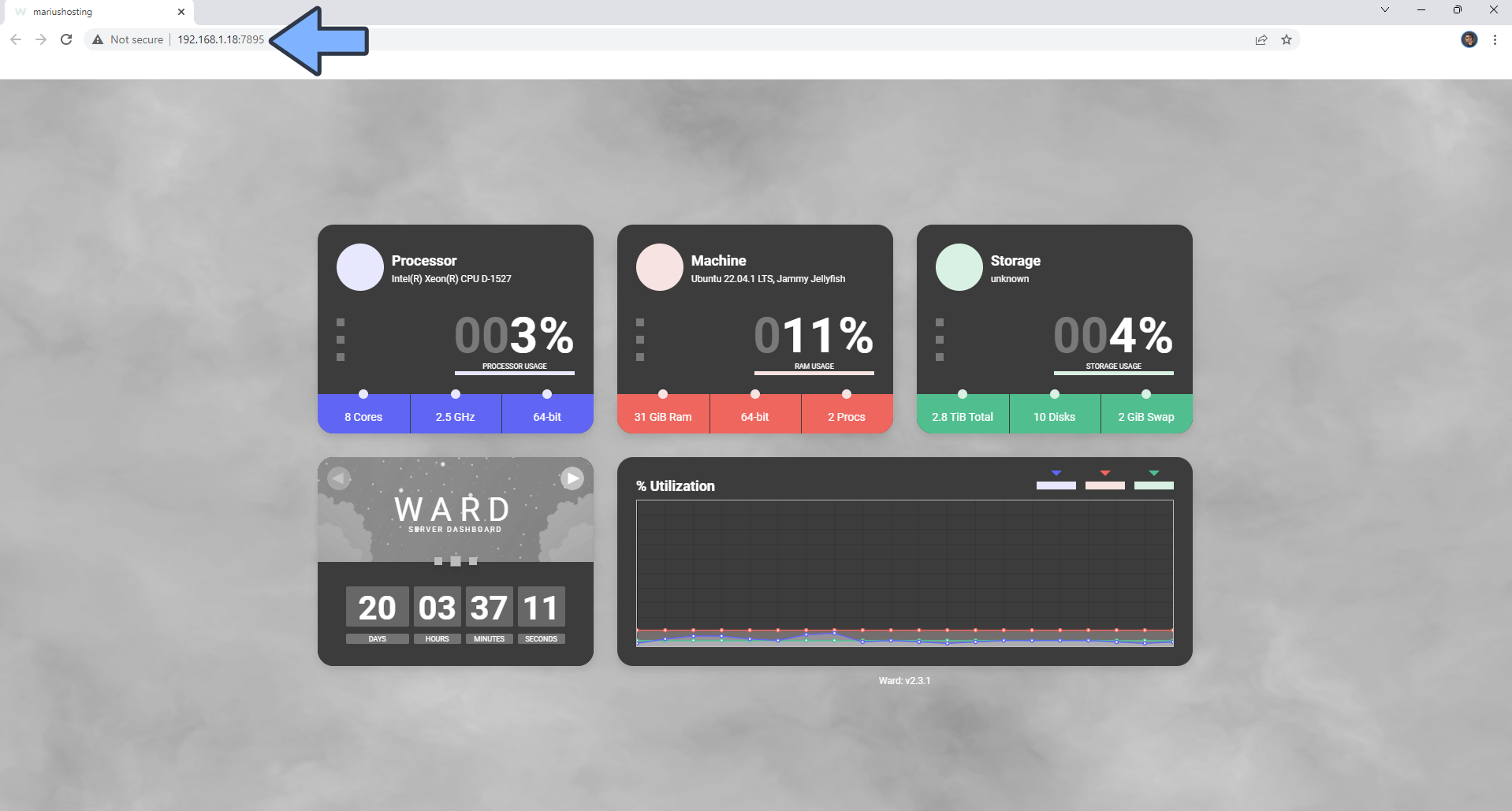
Light mode:
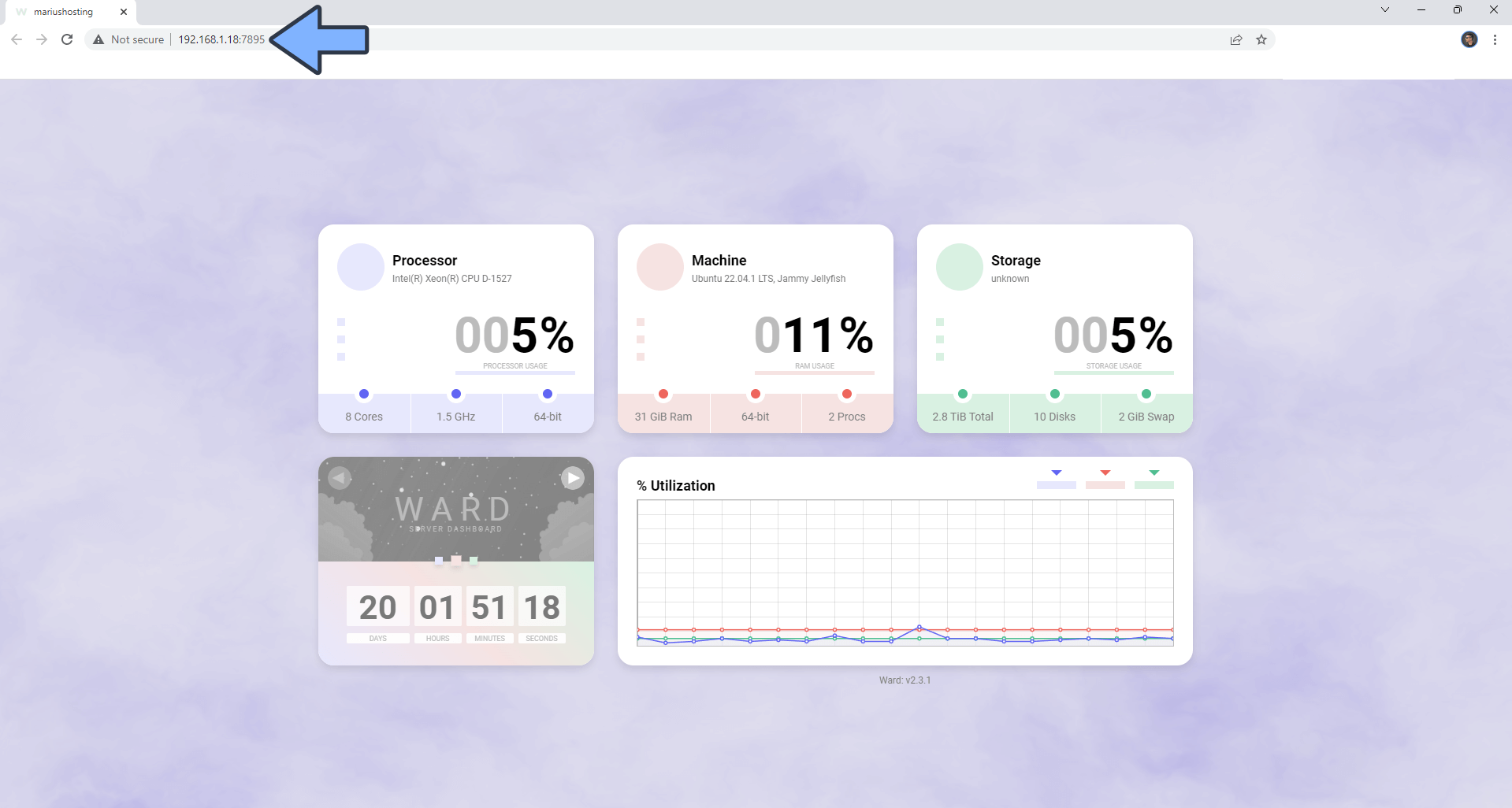
Enjoy Ward!
Note: If you want to run the Ward container over HTTPS, check How to Run Docker Containers Over HTTPS. In order to make Ward work over https, it’s also mandatory to set up WebSocket.
Note: Can I run Docker on my Synology NAS? See the supported models.
Note: How to Back Up Docker Containers on your Synology NAS.
Note: Find out how to update the Ward container with the latest image.
Note: How to Free Disk Space on Your NAS if You Run Docker.
Note: How to Schedule Start & Stop For Docker Containers.
Note: How to Activate Email Notifications.
Note: How to Add Access Control Profile on Your NAS.
Note: How to Change Docker Containers Restart Policy.
Note: How to Use Docker Containers With VPN.
Note: Convert Docker Run Into Docker Compose.
Note: How to Clean Docker.
Note: How to Clean Docker Automatically.
Note: Best Practices When Using Docker and DDNS.
Note: Some Docker Containers Need WebSocket.
Note: Find out the Best NAS Models For Docker.
Note: Activate Gmail SMTP For Docker Containers.
This post was updated on Thursday / August 28th, 2025 at 8:13 PM
